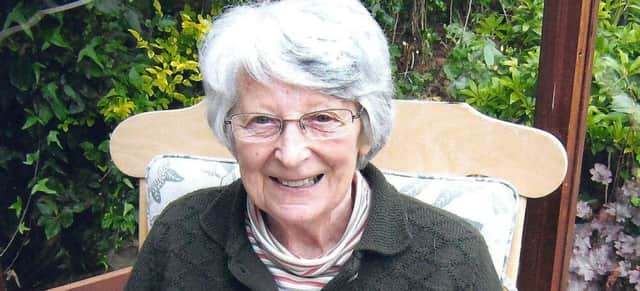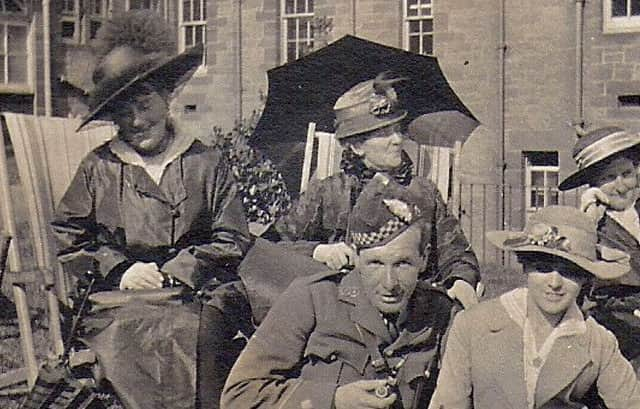The secret history Edinburgh's First World War trenches


Like many, Lynne Gladstone-Millar had walked through the woods many times and hardly given the rolling ground around her a second thought.
At least not until the day her father stood by her side in Dreghorn Wood and let his mind drift back more than half a century.
Advertisement
Hide AdAdvertisement
Hide AdThat was in the 1970s. And what Capt William Ewart Gladstone-Millar MC told his daughter then would surface again years later, when she shared what he had told her of the First World War training trenches in an effort to ensure they were looked after for generations to come.


The trenches had been specially created to prepare thousands of Scots soldiers for the horrors of the battlefield.
An Edinburgh Evening News campaign secured their future five years ago when they were under threat of being lost forever.
However, the fight to save them ignited writer and historian Ms Gladstone-Millar’s curiosity in her father’s incredible wartime service.
Advertisement
Hide AdAdvertisement
Hide AdAfter carefully researching his role in both the First and the Second World Wars, she handed over photographs, personal items and fascinating details of his service, for a poignant online exhibition organised by Edinburgh City Council’s library and museum department.


“My father didn’t want to talk about the war and as children it was never mentioned,” explains Ms Gladstone-Millar. “But as I started to research, I found out things I never knew about him.”
Among the items she found was a war artist’s drawing of her father, holding binoculars, his kitbag on his back, crouched in a low level “scoop out” trench.
The drawing, by Glasgow war artist Fred A Farrell, was dated April 1918. The caption named Capt Gladstone-Millar and explained it showed the 7th Argyll and Sutherland Highlanders defending the river Lawe at Locon in northern France.
Advertisement
Hide AdAdvertisement
Hide AdThe discovery of her father’s image in the drawing and its links to the map – found among her father’s personal possessions – brought to life a brief and particularly important moment in time.
For just a few weeks later Capt Gladstone-Millar would go on to win the Military Cross for a remarkable act of bravery.
While his official citation commends his action in the face of enemy attack, Ms Gladstone-Millar recalls her father mention another element to the incident.
“He told me in addition, four of them set out to silence a gun nest at this battle,” she said. “Three were killed and he went on himself and took the gun nest.”
Advertisement
Hide AdAdvertisement
Hide AdCapt Gladstone-Millar returned home in 1919 after serving in the Army of Occupation in Cologne. He took up a post as a church minister first in the Gorbals, then Arbroath.
That might have been enough for one lifetime. But when he was 49, the Second World War broke out. Although too old to fight, he was given the role of Chaplain, initially with the top secret Commando unit at Lochailort and then with Operation Torch in North Africa.
He completed his service at Glencorse. Years later he retired to live first in Loanhead, then in Colinton.
But according to his daughter, the sights and experiences of the First World War were never far from his mind. Particularly the fate of one young man, 2nd Lieutanent WT Radcliffe, known simply as “Rats”, who was killed yards from where he stood.
Capt Gladstone-Millar buried him in a makeshift grave.
Advertisement
Hide AdAdvertisement
Hide AdAround 40 years later he returned to France to search for his final resting place and pay his respects: “I found a little journal written in fountain pen,” she recalls.
“He and my mother used to go to France on holiday. I thought it was simply a holiday. It was only when I started looking into this further, that I read it properly – and found that he wanted to find where he had buried Rats. It was almost a pilgrimage.” Touched by her father’s story, Ms Gladstone-Millar paid her personal tribute to her father’s fallen comrade by planting a tree in the First World War Memorial Woods, just a few yards from the training trenches at Dreghorn.
“I’ll never know exactly what happened, whether Rats saved his life or if he was just someone my father really liked to be around. But planting the tree seemed the right thing to do.”